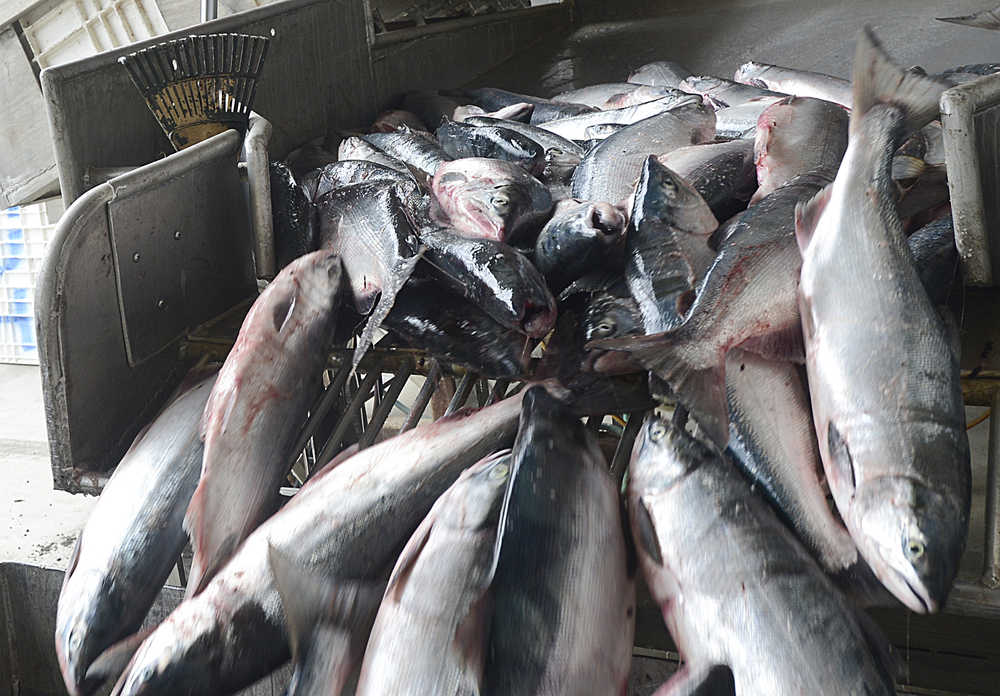The Upper Cook Inlet commercial fishing industry will see a spike in sockeye salmon harvest this year, if the Alaska Department of Fish & Game’s forecast holds true.
Fish & Game forecast a total of 7.1 million sockeye salmon to return to the Upper Cook Inlet streams and rivers, with 4.1 million allocated to commercial harvest. That number is about 1.1 million more than the 20-year average and about 1 million more than the total commercial harvest in 2015.
Most of the increase will be fish headed for the Kenai River, which will see approximately one million more sockeye salmon than the 20-year average, according to Fish & Game’s forecast. The runs to the Kasilof River and the Susitna River will be 13 percent and 12 percent below the 20-year average respectively. The returns to Fish Creek and the unmonitored systems will also be above the 20-year average, according to the forecast.
Last year’s commercial harvest was less than the 2005-2014 average, landing at approximately 2.6 million sockeye salmon. It is the sixth lowest harvest in the last decade, according to Fish and Game’s 2015 season summary.
The commercial fishery regulations from 2014-2017 allow an extra 12-hour fishing period per week in the Expanded Kenai, Expanded Kasilof and Anchor Point sections if the sockeye salmon run exceeds 4.6 million fish.
The Kenai River’s weak king salmon numbers and strong sockeye numbers present a problem for Fish and Game in managing the commercial setnet fishery at the river mouth. Because it is a mixed-stock fishery, it’s nigh on impossible to catch just the sockeye salmon and leave the king salmon for conservation, said Commercial Fisheries Area Biologist Pat Shields in a previous Clarion interview.
“It really is a challenge for how to reduce harvest of the weak stock and keep your harvest up on the strong stock numerically,” Shields said in a previous Clarion interview. “We know it going into the season that we’ll likely be over our escapement in sockeye. The last couple of years you’ve seen that.”
While the sockeye returns in Upper Cook Inlet are projected to be more than the 20-year average, Lower Cook Inlet is expecting a somewhat weaker run and lower commercial harvest than last year. Commercial fishermen can expect to harvest approximately 548,000 fish, 10 percent of which will be hatchery fish, according to Fish & Game’s annual Lower Cook Inlet outlook.
The lower returns for sockeye and pink salmon are in line with the five-year averages for the area, according to the outlook. The Lower Cook Inlet has seen high odd-year runs of pink salmon, and while the 2016 return is lower, the 2017 run is expected to be high again, said Glenn Hollowell, the area finfish management biologist for Homer, in a previous Clarion interview.
“Pink salmon are on a two-year cycle,” Hollowell said. “Other species of salmon come back mixed. We’ve been having really big odd year returns in pink salmon.”
One factor that may affect commercial fisheries is a proposed 1 percent increase on fisheries statewide, currently being considered in the Legislature’s House Fisheries Committee. The bill, HB 251, has drawn criticism from commercial fishing groups who say it would unnecessarily burden an economic driver for the state without solving the state’s fiscal issues.
“We understand the difficulties we face as Alaskans with the State’s current fiscal challenge and we wish to work together to be part of the solution,” said Kris Norosz, who represented Icicle Seafoods at the House Fisheries Committee meeting Feb. 23. “However, as always, the devil is in the details. And we simply feel there has not been enough consideration and analysis of the impacts of the proposed action.”
Norosz said canned salmon could likely not handle an increase in the tax rate and urged the legislature to evaluate different methods.
The bill was held in the Feb. 23 meeting with concerns about the effect on fisheries from the members of the committee, including chair Louise Stutes (R-Kodiak).
“I believe that all resources should pay their fair share, but I don’t want to see the fishing industry be the only one that’s subject to a tax increase,” Stutes said at the meeting.
Reach Elizabeth Earl at elizabeth.earl@peninsulaclarion.com.

